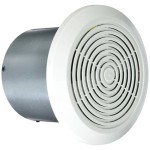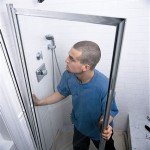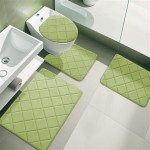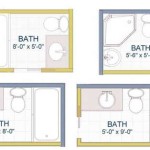Ejector Pump for Basement Bathroom
Installing a bathroom in a basement can be a convenient way to create additional living space in your home. However, the presence of a below-grade bathroom creates a unique challenge when it comes to wastewater and sewage disposal. Unlike bathrooms on the main floor or upper levels, basement bathrooms cannot rely on gravity to drain wastewater. This is where an ejector pump comes into play.
What is an Ejector Pump?
An ejector pump is a mechanical device that is used to elevate and discharge wastewater from a low-lying fixture, such as a toilet or sink, located below the building's main sewer line. Unlike sump pumps, which are designed to remove excess water from a basement or crawlspace, ejector pumps are specifically designed to handle the discharge of sanitary waste.
How an Ejector Pump Works
Ejector pumps use a combination of water and air pressure to create a suction effect that forces wastewater up through a discharge pipe and into the main sewer line. The pump consists of a tank, a motor, and an air vent. The motor powers an impeller that creates the suction effect. As wastewater enters the tank, it rises and compresses the air in the vent. This creates pressure that helps to force the wastewater out of the tank and up the discharge pipe.
Types of Ejector Pumps
There are two main types of ejector pumps: primary and secondary.
- Primary ejector pumps are used to discharge wastewater from a single fixture, such as a toilet. They are typically installed next to the fixture and discharge into a vertical pipe.
- Secondary ejector pumps are used to collect and discharge wastewater from multiple fixtures, such as a toilet, sink, and shower. They are installed in a sump pit in the basement and discharge into a horizontal pipe that leads to the main sewer line.
Factors to Consider When Choosing an Ejector Pump
When choosing an ejector pump, there are several factors to consider:
- Capacity: The capacity of the pump is measured in gallons per minute (gpm). The capacity of the pump should be sufficient to handle the wastewater flow rate from all of the fixtures that will be connected to it.
- Head: The head of the pump is measured in feet. The head of the pump must be sufficient to lift the wastewater to the desired discharge height.
- Power: The power of the pump is measured in horsepower (hp). The power of the pump should be sufficient to provide the necessary suction and discharge capabilities.
- Size: The size of the pump is determined by its capacity, head, and power. The pump should be sized to fit the available space in the basement.
Installation and Maintenance of Ejector Pumps
Ejector pumps should be installed by a qualified plumber. The pump should be installed in a flood-proof location in the basement and connected to the appropriate fixtures and discharge pipe. The pump should also be equipped with a battery backup to ensure that it will continue to operate in the event of a power outage.
Ejector pumps require regular maintenance to ensure their proper operation. The pump should be inspected and cleaned on a regular basis. The pump should also be tested to ensure that it is operating properly.
Conclusion
Ejector pumps are an essential component of basement bathrooms. They provide a reliable and efficient means of discharging wastewater from fixtures that are located below the building's main sewer line. By choosing the right ejector pump and installing it properly, you can ensure that your basement bathroom will operate properly for years to come.

Everbilt 1 2 Hp Upflush System Sewage Ejector Pump Kit Sw07501tc The Home

Basement Plumbing For Ejector Pump Up To Main Sewage Line Terry Love Advice Remodel Diy Pro Pumps

What Is A Septic Ejector Pump How Does It Work The Original Plumber

Sump Pump Sewage Ejector Finishing Basement

Superior Pump 1 2 Hp Sewage Ejector Kit With Basin 93020u The Home

Tips On Keeping Your Sewage Ejector Pump Running Smoothly

Basement Bathroom Plumbing Planning For A Below Grade Lavatory

Sewage Ejector Pump Maintenance Bieg Plumbing

Sewage Ejector Pumps Explained Strongman

Why You Have A Mini Septic Tank In Your Basement Gold Key Home Inspections







